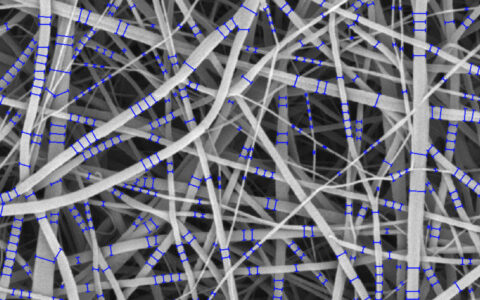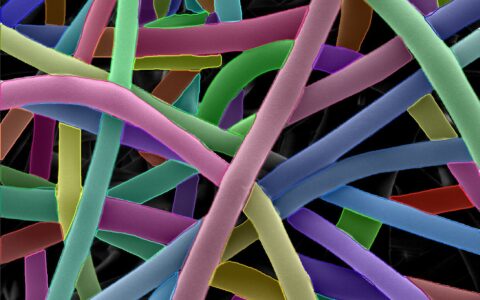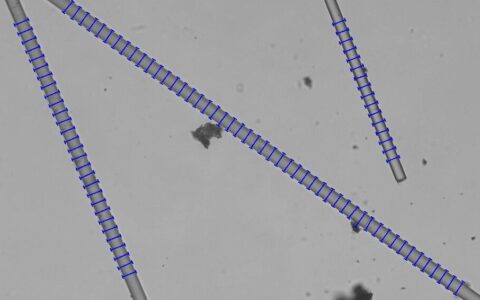Fiber Thickness
(EM Ceramic/Glass)
The ability to precisely measure fiber thickness (diameter) is crucial for quality assurance in the production of ceramics, glass, electrospun fibers, and similar materials. However, segmenting densely packed fibers within a field of view can often be a challenging and time-consuming task.
The Image-Pro Fiber Thickness (EM Ceramic/Glass) protocol streamlines this process with a series of easily configurable steps, enabling efficient analysis of large datasets with minimal image analysis expertise. Individual fibers can be segmented using pre-trained deep learning models, machine learning, or a custom algorithm, ensuring accurate and reproducible results.
Techniques: Brightfield, SEM, TEM
How it works
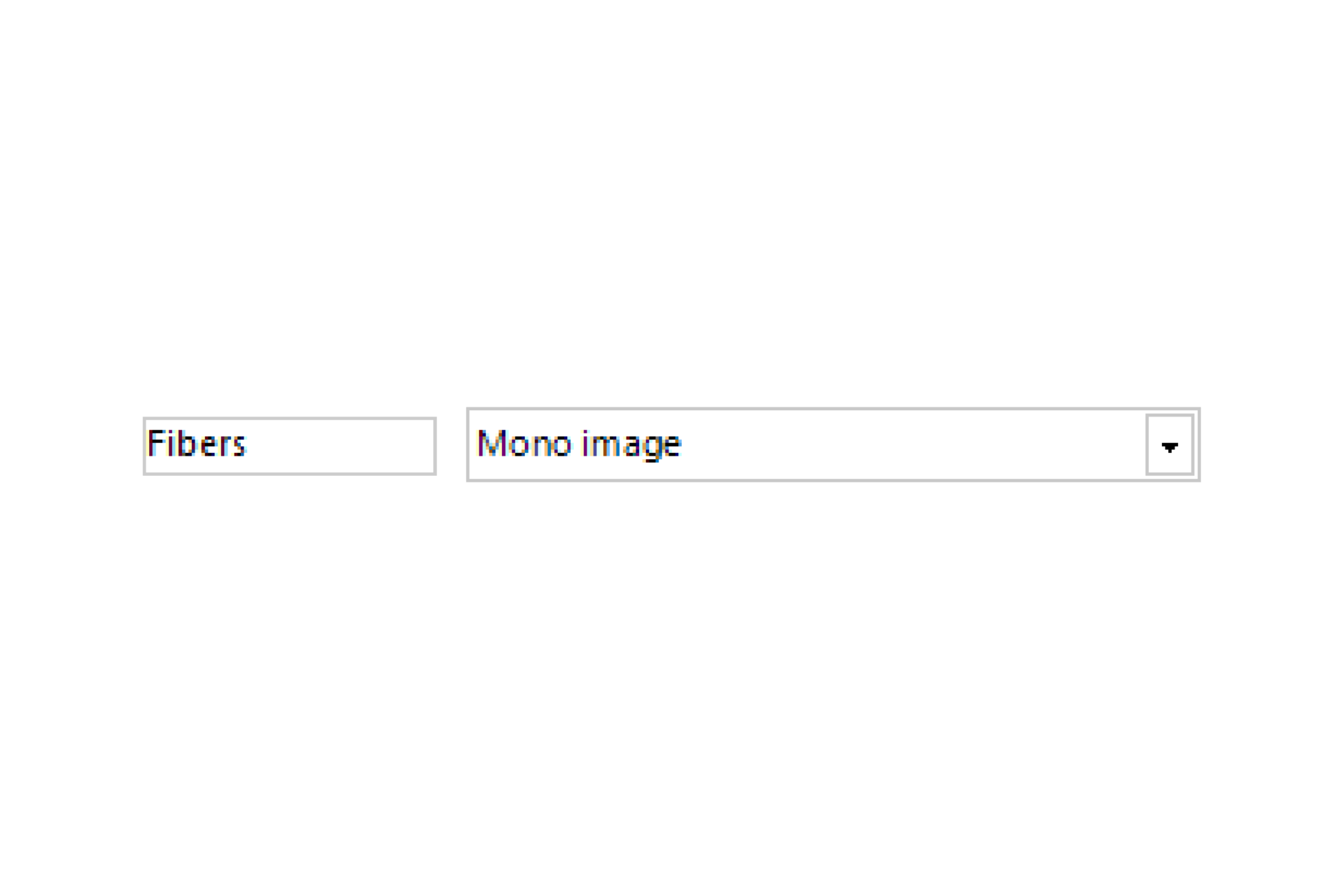
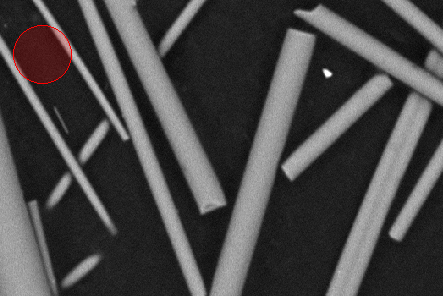
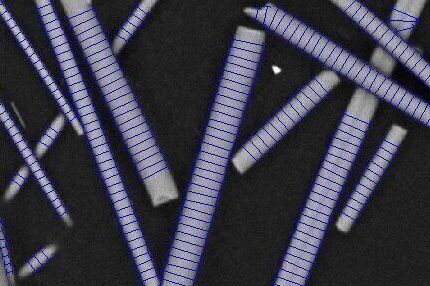
Select Channel
Select the channel that contains fibers.
Set Diameter
Set the diameter for a pre-trained deep learning model, or set settings for machine learning or a custom algorithm.
Measure
Automatically measure fiber thickness.
Quantitative results

Automatically generate tables, heat maps, charts and even complex bespoke reports.
Measurement parameters supported
- • Mean Thickness
- • Minimum Thickness
- • Maximum Thickness
- • Standard Deviation
- • Mean Fiber Angle
- • Custom user-defined measurements
Solution requirements
Required Modules
Base
2D Automated Analysis
Materials EM Protocols Collection
Fiber Thickness (EM) Protocol
Recommended Package
Literature spotlight
- Ferreira, T. R. M., Lechtman, M. D. A., Dias, F. L., & Silva, A. B. D. (2022). Effect of hollow glass microspheres addition on density reduction and mechanical properties of PA6/glass fibers composites. Polimeros, 32(1), e2022001.
- Zhou, N., Xu, B., Zhou, Z., Qu, L., Wang, Y., Han, W., & Fang, D. (2023). Lightweight quasi-layered elastic fibrous porous ceramics with high compressive stress and low thermal conductivity. Journal of Materials Science & Technology, 143, 207-215.

